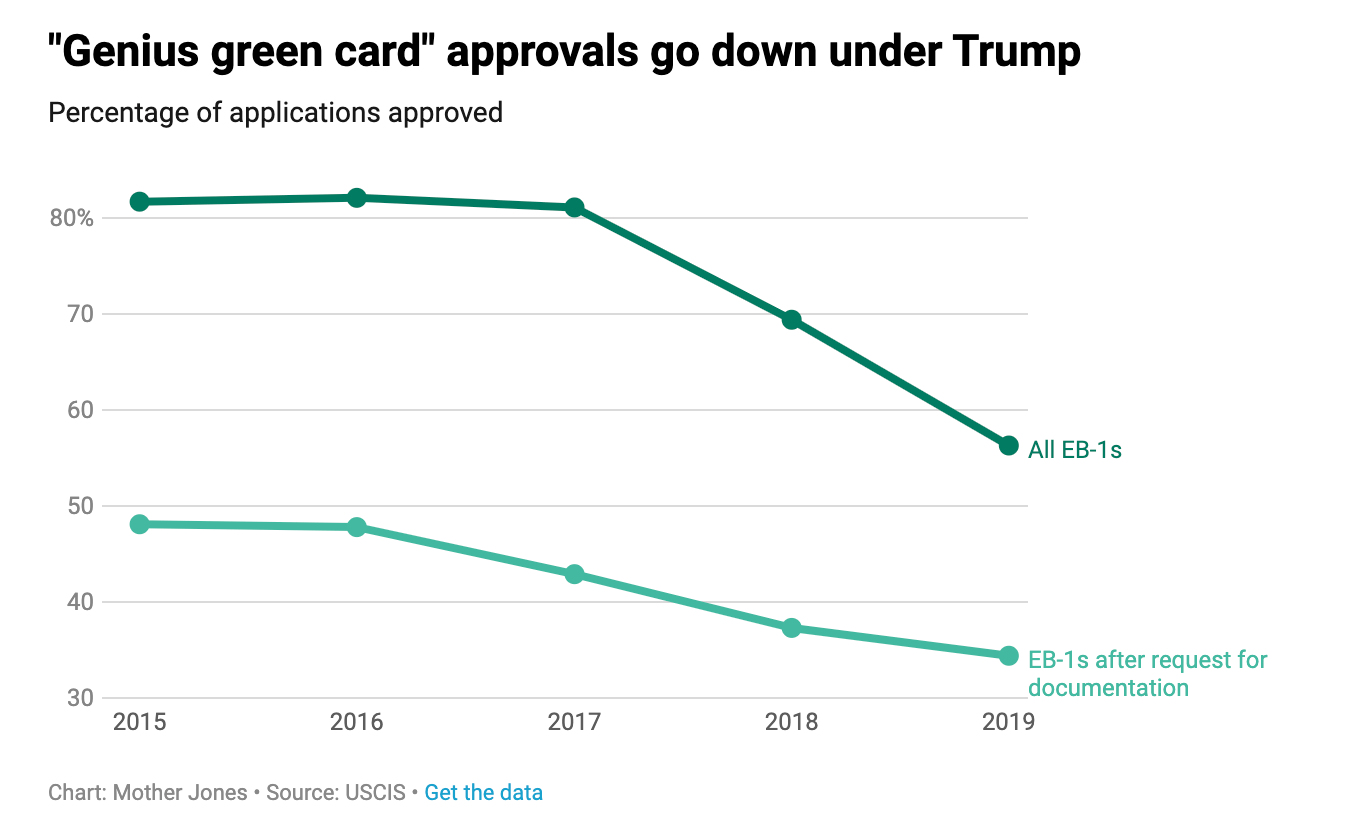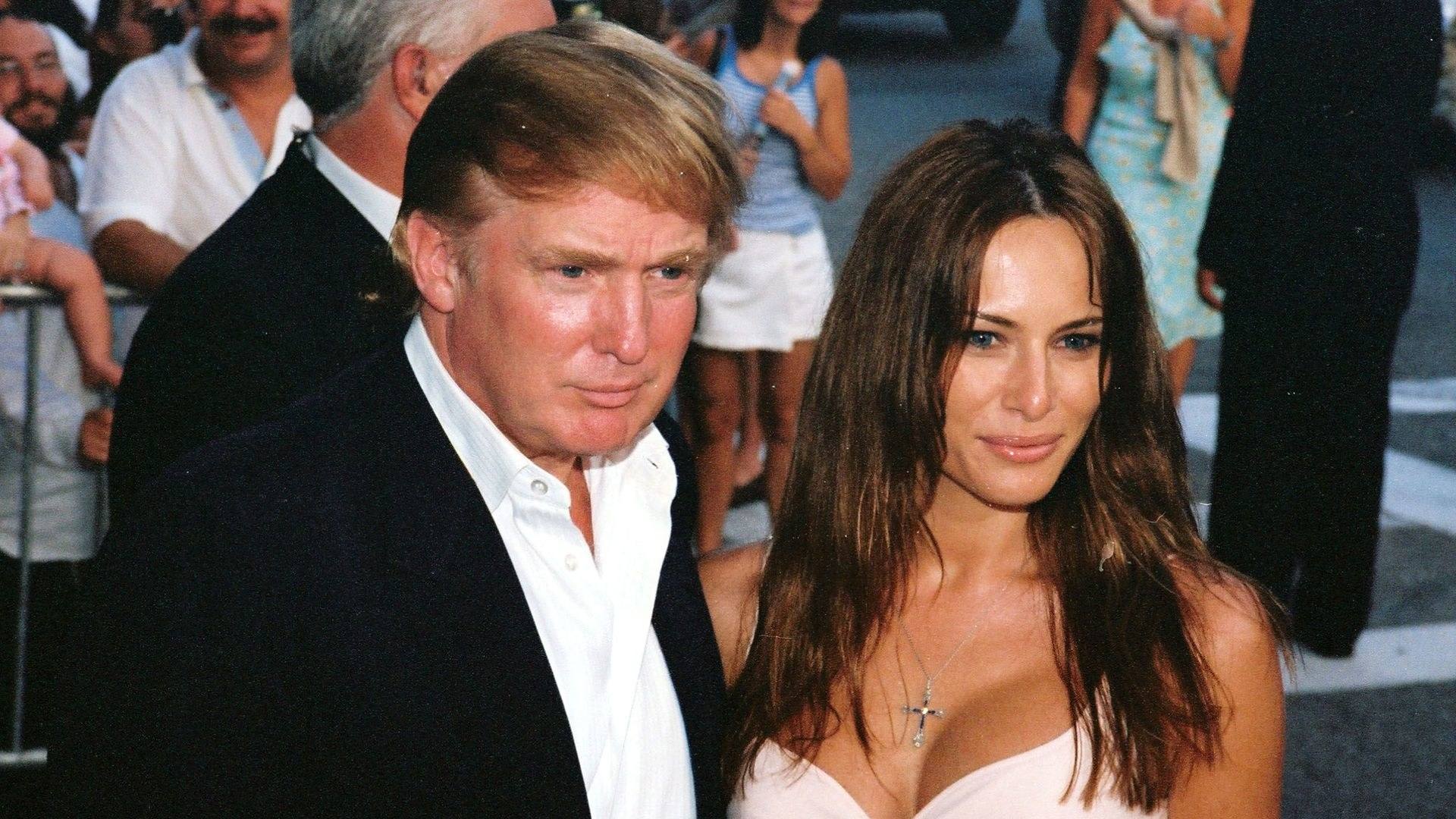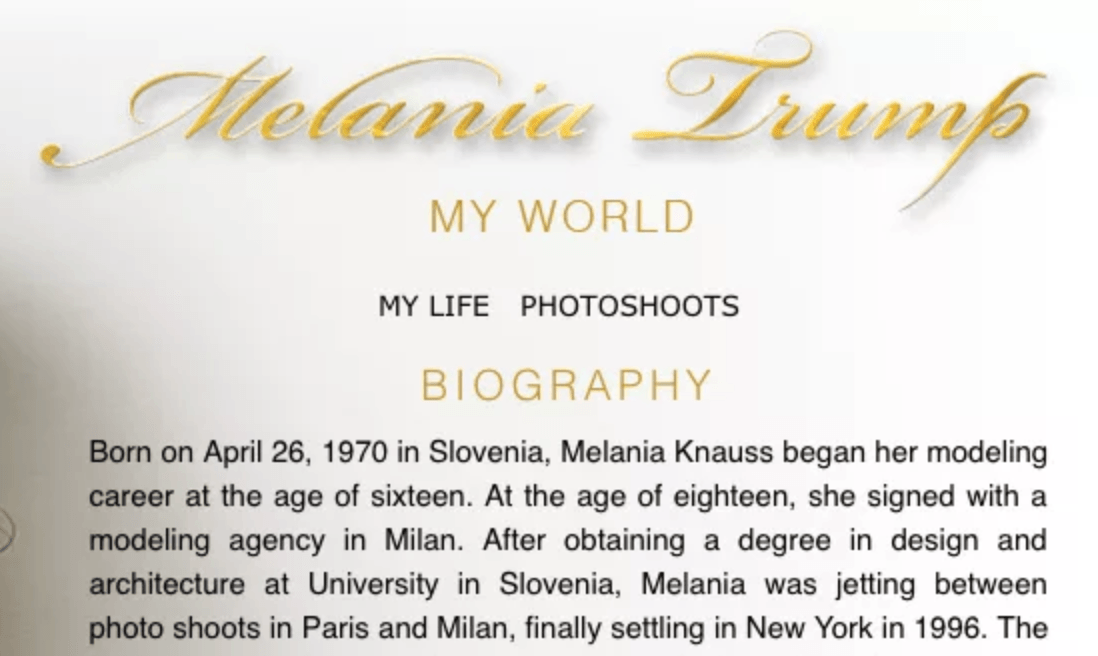Politics - News Analysis
Trump is Making it Incredibly Difficult for People to Receive the ‘Einstein Visa’ — Same Visa Melania Easily Obtained
Are you ready for some hypocrisy?
A new report from Mother Jones details the story of a Nobel laureate who tried to get a visa to come to the United States. And because this person had won a Nobel Prize, he figured he would be a shoo-in for the EB-1 visa, or the coveted “Einstein Visa.” After all, if the Einstein visa wasn’t for a Nobel prize winning person, who would it apply to?
Well, the Trump administration rejected the visa.
From Mother Jones:
Yet in April 2017, the government rejected the Nobel laureate’s application on the grounds that they had failed to present adequate “evidence of a one-time achievement—a major internationally recognized award.” In other words, they had not provided enough proof that they had in fact received a Nobel.
Stay up-to-date with the latest news!
Subscribe and start recieving our daily emails.
Now eventually, this person did obtain the visa, but it was extremely difficult and took years.
Michael beefed up his client’s application and resubmitted it to U.S. Citizenship and Immigration Services, the agency that issues green cards and visas. “We now knew that we had to, to use an inappropriate phrase, be ‘holier than Jesus,’” he says. “We had to get every I dotted, every T crossed.” In early 2019, USCIS approved the Nobel laureate’s genius green card. “We’re better as a country for someone like that wanting to come to live in the United States,” Michael says.
According to USCIS data, approval rates for EB-1 extraordinary ability green cards have dropped from 82 percent in the 2016 fiscal year to 56 percent in 2019. Immigration attorneys say the Trump administration is interpreting the rules for genius green cards more narrowly than previous administrations, rejecting highly qualified applicants including researchers, athletes, and journalists.
These decisions appear to fly in the face of President Donald Trump’s own statements about his immigration priorities. At a White House Rose Garden ceremony where he unveiled his “merit-based” immigration plan last May, Trump said he wanted to prioritize admitting doctors, researchers, and other professionals with stellar academic records. “Under the senseless rules of the current system…we’re not able to make those incredible breakthroughs,” he said. “We want these exceptional students and workers to stay, and flourish, and thrive in America.” During his most recent State of the Union address, he said his administration is “working on legislation to replace our outdated and randomized immigration system with one based on merit.”

And as Mother Jones details, the Nobel winner wasn’t alone in getting rejected.
Dobrina Ustun, an immigration attorney in Dallas who specializes in extraordinary ability visas and green cards, describes the cases of two European journalists whom she recently represented. The two had almost identical professional profiles: Each was the editor-in-chief of an international magazine in their respective countries and had won multiple awards for their work. Both had been written up in publications such as Time and the New York Times and both had been fellows at a highly competitive program at Stanford University for experienced journalists from across the globe. The one who applied for an extraordinary ability green card during the Obama administration was approved. The one who applied under the Trump administration was rejected.
But do you know who didn’t have a problem getting an Einstein Visa?
Melania Trump.
Back in 2000, Melania Knauss, a Slovenian model dating Donald Trump, began petitioning the government for the right to permanently reside in the United States under a program reserved for people with “extraordinary ability.”
Knauss’ credentials included runway shows in Europe, a Camel cigarette billboard ad in Times Square and – in her biggest job at the time – a spot in the swimsuit edition of Sports Illustrated, which featured her on the beach in a string bikini, hugging a six-foot inflatable whale.
She also claimed to be a college graduate.
In March 2001, she was granted a green card in the elite EB-1 program, which was designed for renowned academic researchers, multinational business executives or those in other fields, such as Olympic athletes and Oscar-winning actors, who demonstrated “sustained national and international acclaim.”
“We called it the Einstein visa,” said Bruce Morrison, a former Democratic congressman and chairman of the House subcommittee that wrote the Immigration Act of 1990 defining EB-1.
The year that Knauss – now first lady Melania Trump – got her legal residency, only five people from Slovenia received green cards under the EB-1 program, according to the State Department.

In all, of the more than one million green cards issued in 2001, just 3,376 – or a fraction of one percent – were issued to immigrants with “extraordinary ability,” according to government statistics.
Melania Trump’s ability to secure her green card not only set her on the path to US citizenship, but put her in the position to sponsor the legal residency of her parents, Viktor and Amalija Knavs. The Washington Post reported they obtained their own citizenship.
The biggest question people often have is how did Melania convince immigration authorities that she qualified for the EB-1 program?
Morrison, the former congressman and immigration expert, said that Melania Trump’s resume in 2001 seems “inconsistent” with the requirements of the visa.
To obtain an EB-1 under the extraordinary ability category, an immigrant has to provide evidence of a major award or meet at least three out of 10 criteria. Among them: evidence of commercial successes in the performing arts, evidence of work displayed at artistic exhibitions and evidence of original contributions to a field.
“What did she submit?” asked David Leopold, an immigration lawyer and a past president of the American Immigration Lawyers Association. “There are a lot of questions about how she procured entry into the United States.”
The process of deciding who meets the “extraordinary ability” standard is subjective, said Sarah Pierce, an immigration expert at the Migration Policy Institute, a Washington-based think tank. But it is generally thought that only the top two percent of people in their field would qualify, she said, adding that the “quintessential award you want to put on the application is Nobel Prize.”
The first lady came to the United States from Slovenia in 1996, first briefly on a visitor’s visa and then on work visas, according to Wildes.
Initially, she was not widely known in the highly competitive New York fashion world, according to people in the industry.
“She was never a supermodel, she was a working model – like so many others in New York,” said one person who knew her in the 1990s and requested anonymity to discuss the first lady’s early years in the United States.
In 1998, at age 28, she began dating Trump after meeting him at a party, an association that raised her modeling profile. She started appearing on Page Six and in other celebrity columns on the arm of the real estate developer.
At the time, she was modeling on a work visa for skilled immigrants. Melania Trump received five H1-B visas between October 1996 and 2001, Wildes has said.
Under her husband’s administration, such temporary visas have been harder to get, dropping by more than 50,000 in 2017 compared with the previous year, according to US Citizenship and Immigration Services.
In January 2000, in perhaps her most widely known photo shoot, Melania Trump appeared on the cover of British GQ magazine. She was photographed nude on a fur rug on Donald Trump’s private jet under the headline, “Sex at 30,000 feet. Melania Knauss earns her air miles.”
The accompanying article predicted that the political aspirations of Trump – then making a bid for the Reform Party nomination – could transform his Slovenian girlfriend into the first lady of the United States one day.
“I will put all my effort into it,” she told the magazine, “and I will support my man.”
Melania Trump also claimed to be a college graduate, but that has turned out to be a lie.
Melania claimed to have competed a degree in design and architecture at an unspecified university in Slovenia, her country of birth.

According to Snopes.com:
There is no “University in Slovenia,” nor is there a “University of Slovenia.” The country contains several colleges, including the University of Ljubljana, which other news outlets have reported (without citation) was where Melania obtained her degree. But while the claim that she possesses a degree in Architecture and Design appears on several web sites, these reports lack specific details, such as the year she graduated.
CBS News looked deeper into Melania’s degree after her appearance at the Republican National Convention:
Melania Trump didn’t receive a college degree in design and architecture at the university in Ljubljana, Slovenia, which her biography in the Republican National Convention program claims she had obtained.
CBS News has checked the official public records of the university, and Melania Trump is not listed as having graduated from there with a degree.
So, Melania is a liar, and perhaps lied on her visa application, which deserves a second look, don’t you think??
Comments
Comments are currently closed.